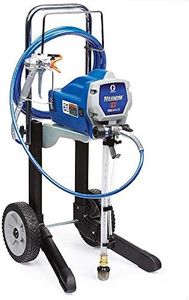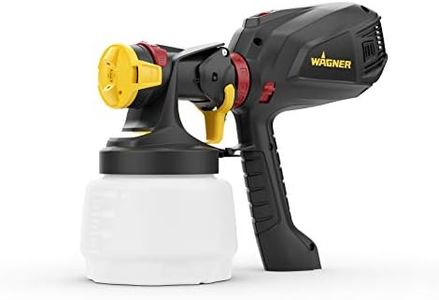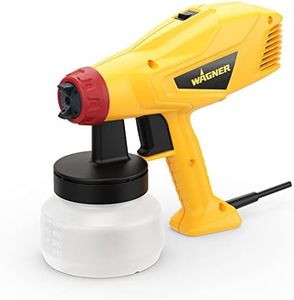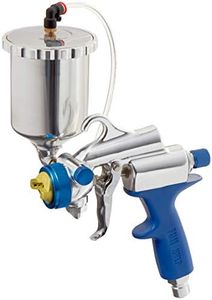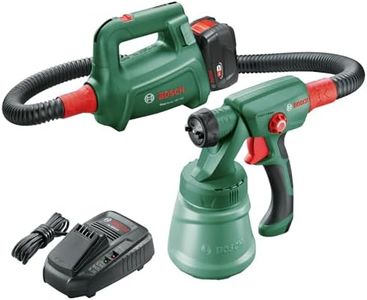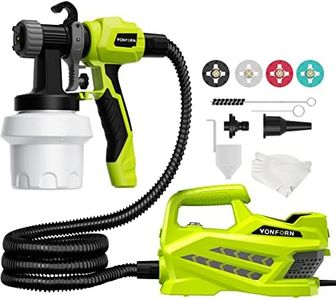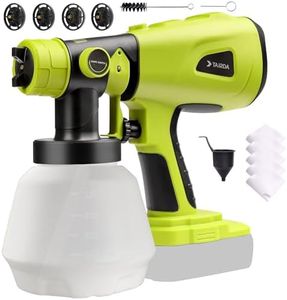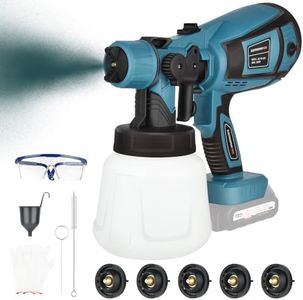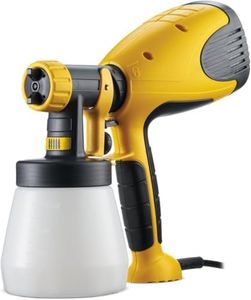We Use CookiesWe use cookies to enhance the security, performance,
functionality and for analytical and promotional activities. By continuing to browse this site you
are agreeing to our privacy policy
10 Best Indoor Paint Sprayers
From leading brands and best sellers available on the web.By clicking on a link to a third party's website, log data is shared with that third party.
Buying Guide for the Best Indoor Paint Sprayers
Choosing the right indoor paint sprayer can make your painting projects faster, cleaner, and result in a more professional-looking finish. The best sprayer for you depends on the size of your projects, the types of surfaces you'll paint, and how comfortable you are with using different sprayer technologies. Think about whether you'll be tackling entire rooms or just furniture and trim, and whether you're new to paint sprayers or have used one before. Taking a moment to understand what various specifications mean will help you find a tool that's easy to use and gives you the best results for your needs.Spray Technology (Airless, HVLP, or Compressed Air)Spray technology refers to how paint is atomized and sprayed onto the surface. Airless sprayers pump paint at high pressure, allowing for fast coverage and are generally suited for larger projects like walls and ceilings. HVLP sprayers (High Volume Low Pressure) use a high volume of air at low pressure, providing more control, less overspray, and a finer finish, making them ideal for furniture or detail work. Compressed air sprayers use an external compressor and can be good for both large and small projects but often require more setup and maintenance. Your needs should guide your choice: go for airless if speed and large area coverage is key, choose HVLP if you value quality finishes on smaller areas, or consider compressed air for flexibility if you already own a compressor.
Flow Rate (Gallons Per Minute or Liters Per Minute)Flow rate measures how much paint the sprayer can deliver within a certain timeframe. A higher flow rate means the job gets done faster, but it can also create more mess and may be harder to control for detailed work. Lower flow rates provide more precision but are slower. For big rooms, prioritize a higher flow rate, while for touch-ups or close-detail work, a lower flow rate will help you work carefully.
Adjustable Pressure ControlPressure control lets you adjust how strongly the paint is sprayed. This adjustment is critical because different surfaces and paint types need different levels of pressure for the best results. Low pressure is good for thin paints and detail work, while high pressure suits thicker paints and broad surfaces. If you have varied projects or want versatility, look for a sprayer with easy pressure adjustments so you can handle anything from delicate jobs to entire rooms.
Nozzle and Tip OptionsNozzles and tips determine the spray pattern and are key for both coverage and finish quality. Wider tips are best for walls and ceilings, allowing fast painting, while narrower or specialty tips work for trim, edges, and furniture. Many sprayers come with multiple tips or allow you to buy extras. If your projects range in size or you need to swap between wide coverage and fine detailing, having interchangeable tips is a big advantage.
Ease of CleaningPaint sprayers can be messy, and cleaning them promptly after use is crucial for long life and reliable performance. Some sprayers feature parts that quickly disassemble or have hose attachments for fast cleaning. Simpler internal paths and fewer detachable elements can make cleanup easier, saving you a lot of time and frustration, especially if you will use the sprayer often.
Paint Compatibility (Viscosity and Types)Not all sprayers handle all paint types equally well. Some can spray thicker paints like latex without thinning, while others work best with thinner materials. Consider the types of paints you plan to use—interior latex, stains, sealers—and make sure the sprayer can handle them. Check manufacturer guidance for viscosity levels so you won't struggle with clogging or poor spray quality.
Portability and WeightIndoor painting often means moving your sprayer from room to room or climbing up ladders and steps. Lightweight or compact models are easy to reposition but might have smaller paint cups and require frequent refills. Heavier models might offer larger capacity and more power but can be tiring to carry. Match the sprayer's size and weight to how much you need to move it during your projects.


